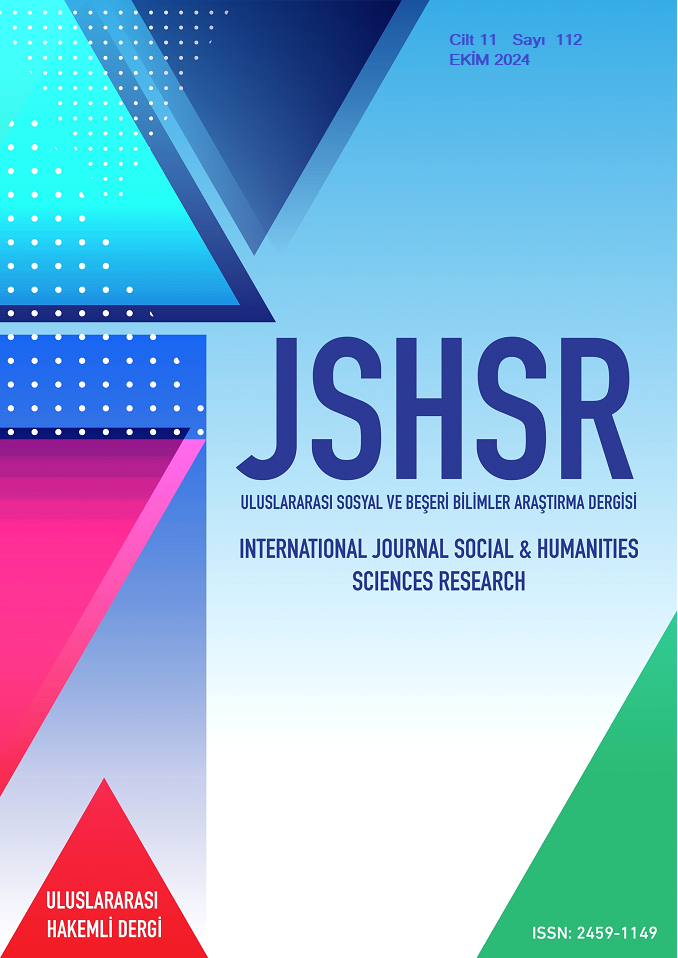Suicide Tendencies Among Youth, Their Reasons and Solution
DOI:
https://doi.org/10.5281/zenodo.14030328Keywords:
Young, Adolescent, suicide, Education, Religion.Abstract
From the moment they come into this world, people start to strive to live a good life. For this reason, they are very sensitive about choosing their education, the profession they will work in, their social environment and their family. However, sometimes when these expectations are not met, people experience problems, suffer and eventually become depressed and experience psychological collapse. It is precisely during such periods that people start to think of the simplest way to get rid of these problems and troubles, namely ending their lives. Especially in adolescents and young people, when no exit point can be found in events such as academic failure, emotional and social deprivation, an increase in suicidal tendencies is observed. In this study, research was conducted on the causes, dimensions and ways to cope with suicidal tendencies in adolescents and young people. Studies in our country and other countries were compiled; the relationship between suicides and gender, age, race, marital status, social factors and academic success was tried to be explained. Information was provided on social, public, environmental, family and individual precautions that should be taken as preventive measures to prevent suicide cases among young people, and it was observed that a good education and a solid family structure are indispensable factors for happiness in adolescents and young people.
References
Atay İ. M. & Kerimoğlu E. (2003). Ergenlerde İntihar Davranışı, Çocuk ve Gençlik Ruh Sağlığı Dergisi 10/3 (2003) 128-136
Akalın Ş. H. (2011).Türkçe Sözlük, Ankara.
Arslan M., Duru M. & Kuvandik G. (2008). Hatay’da İntihar Girişiminde Bulunan Olguların Analizi, Adli Tıp Dergisi 22/3 (2008) 9-14.
Balcıoğlu, İ., & Abanoz, Y. (2009). Madde Bağımlılığı, İntihar, Sanık Psikolojisi.,Dirim Tıp Gazetesi, 84(1), 15-20.
Cüceloğlu, D. (1997). İnsan ve Davranışı, Remzi Kitabevi.
Çayköylü A, Çoşkun İ, Kırkpınar İ, ve ark. (1997) Özkıyım Girişiminde Bulunanlarda Sosyodemografik Özellikler ve Tanı Dağılımı, Kriz Dergisi, 5 (1); 37-42.
Davis JM ve Brock SE (2002) Suicide. Handbook Of In Crisis Counseling, Intervention, Prevention in the Schools, içinde J Sandoval (ed). (2nd Ed), Lawrence Erlbaum Associates Publishers, London; 273-301
Deveci A., Taşkın O., Dündar P. E., Demet M., Kaya E., Özmen E. & Dinç G. (2005). Manisa İli Kent Merkezinde İntihar Düşüncesi ve Girişim Yaygınlığı, Türk Psikiyatri Dergisi 16/3 (2005) 170-178.
Demircan , T., & Karbeyaz, K. (2022). Tamamlanmış İntihar Olgularında Psikolojik Otopsi, Osman Gazi Tıp Dergisi, 593-600.
Durkheim E. (2013). İntihar. Çev. Ö. Ozankaya.
Durkheim, E. (1992). İntihar (Özer Ozankaya, Çev.), İmge Kitabevi.
Eskin , M., Akoğlu, A., & Uygur, B. (2006). Ayakta Tedavi Edilen Psikiyatri Hastalarında Travmatik Yaşam Olayları ve Sorun Çözme Becerileri: İntihar Davranışıyla İlişkisi. Türk Psikiyatri Dergisi, 17(4), 266-275
Gould MS ve Kramer AR (2001) Youth suicide prevention. Suicide & Life, Threatening Behavior. 31, 6-32.
Gökçen C. & Köylü R. (2011). Acil Servisten İntihar Girişimi Nedeniyle Psikososyal Destek Birimine Yönlendirilen 18 Yaş Altı Olguların Değerlendirilmesi, Akademik Acil Tıp Dergisi (2011) 18-21.
Hogg, M.A., Vaughan G.M.. Tutumlar. Sosyal Psikoloji Kitabı (Çev:Yıldız, İ., Gelmez, 1. Baskı, Sözkesen Matbaası.
Myers, D. Social Pschology, Teachers College Press, New York, 1990: 67.
Moscicki E. K. (1997). Identification of Suicide Risk Factors Using Epidemiologic Studies, Psychiatric Clinics of North America 20 (1997) 499-517.
Naghavi, M. (2018). Global, regional, and national burden of suicide mortality 1990 to 2016: systematic analysis for the Global Burden of Disease Study 2016. BMJ, 1-11.
Özgüven-Devrimci, H. ve Sayıl, I. (2003). Suicide attempts in Turkey : Results of the WHO / EURO multicentre study of suicidal behavior, Can J Psychiatry, 48, 324-329.
Sabawoon, A., Keyes, K., Karam, E., & Masfety, V. (2022). Associations between traumatic event experiences, psychiatric disorders, and suicidal behavior in the general populationof Afghanistan: fndings from Afghan National Mental Health Survey. Sabawoon et al. Injury Epidemiology, 1-17.
Sarandöl A. (2003). İntihar, Birinci Basamak İçin Psikiyatri 2 (2003) 32-45.
Siyez, D. M. (2006). Ergenlik Döneminde İntihar Girişimleri, Kastamonu Eğitim Dergisi, 14(2), 413-420.
Şevik, A., Özcan, H., & Uysal , E. (2012). İntihar Girişimlerinin İncelenmesi: Risk Faktörleri. Klinik Psikiyatri, 14(4), 218-225.
Şahbaz, H. (2022). Coğrafi Bir Bakış Açısıyla 2002-2019 Döneminde Türkiye'deki İntiharlar, Erzurum Teknik Üniversitesi Sosyal Bilimler Enstitüsü Dergisi, 15, 64-103.
Turecki, G., & Brent, D. (2017). Suicide and Suicidal Behaviour. Cabadian Institutes of Health Research, 1227-1239.
Yüksel N. (2001).İntiharın Nörobiyolojisi, Klinik Psikiyatri Ek 2 (2001) 5-15.
Downloads
Published
How to Cite
Issue
Section
License
Copyright (c) 2024 INTERNATIONAL JOURNAL OF SOCIAL HUMANITIES SCIENCES RESEARCH

This work is licensed under a Creative Commons Attribution 4.0 International License.


